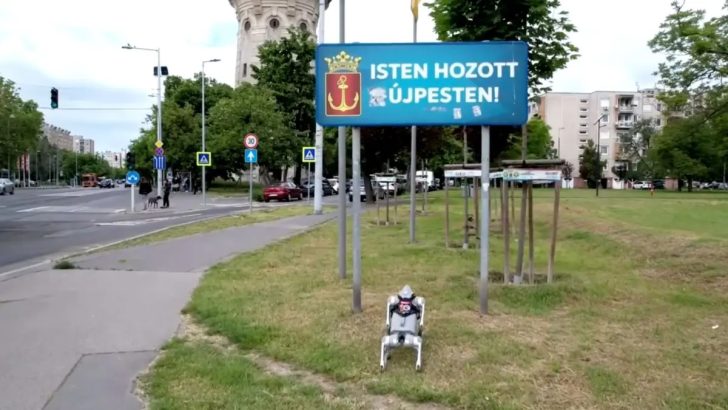A new robot dog in Hungary is turning heads, wagging its digital tail, and teaching kids how to care for animals. The Unitree Go2 robot dog is more than just a tech toy. It is a full-on lesson in empathy, responsibility, and real-world pet care.
The robot dog responds to touch, follows voice commands, and pretends to be fed or groomed. It is designed to feel real enough to make children think twice before pulling a tail or ignoring a bark. The goal is to help kids learn the basics of animal welfare by getting hands-on, even without a live pet.
The project made its debut at the “Children’s Day of Old Times” festival in Budapest, drawing crowds of curious kids and relieved parents. Families watched as the robot dog played, followed, and even “acted” happy or sad based on how it was treated. To top it off, a naming contest let the public pick what to call their new four-legged friend. That move made the robot feel less like a machine and more like a part of the community.
Schools and kindergartens are next. The robot dog is going on tour to classrooms across Hungary. Organizers plan to bring it to public spaces, especially where kids might not have access to pets at home. It’s part of a bigger effort to make animal education fair and fun, no matter where a child lives or how much their parents earn.

Interesting Eng / Weighing in at 15 kilograms, it has 4D LiDAR sensors and 360° vision. That means it can move safely, spot objects, and react like a real dog might.
It even has a “side-follow” mode, walking beside kids as they move. That makes the experience feel personal, almost like walking a real dog down the street.
The robot dog uses OpenAI’s GPT model. So when kids ask questions or give commands, it can respond with more than barks. It talks, guides, and explains what it is doing.
Experts say the robot may soon help the Animal Rescue League, Állatmentő Liga, during rescue missions or fundraising events. Since it doesn’t get tired or scared, the robot could go places real dogs can’t, acting as both helper and mascot.
Plans are in the works to add environmental sensors to future versions. This would let the robot enter risky spots, check for danger, and maybe even support firefighters or rescuers. For now, though, its main mission is still education. Its goal is to get the next generation thinking about animals not as toys but as beings who need care, patience, and respect.
However, this whole thing lines up with the European Union’s bigger goals. They want more digital tools in schools and more awareness around animal welfare. Hungary just found a way to hit both at once. If this model works and early signs look good, other countries may want in on the idea.
